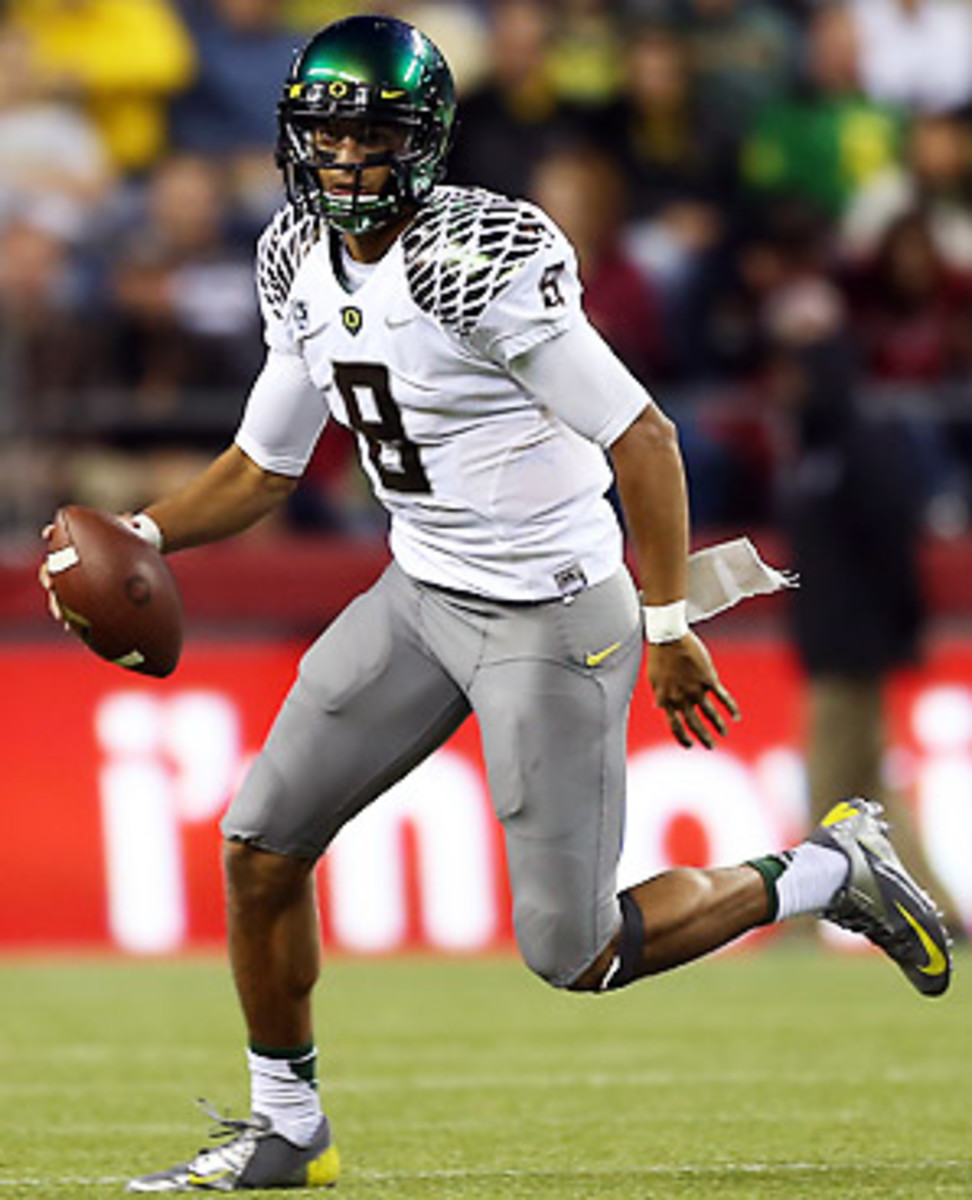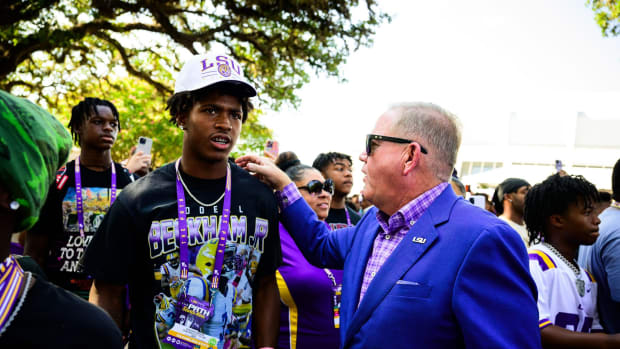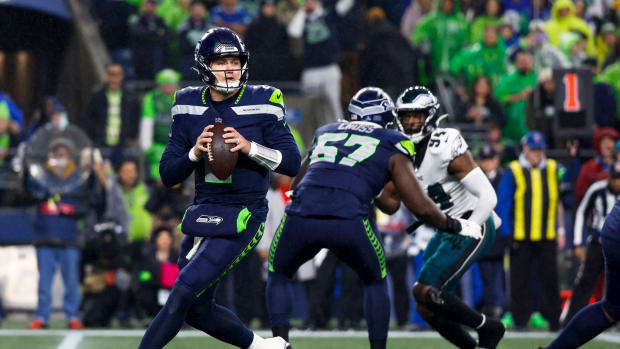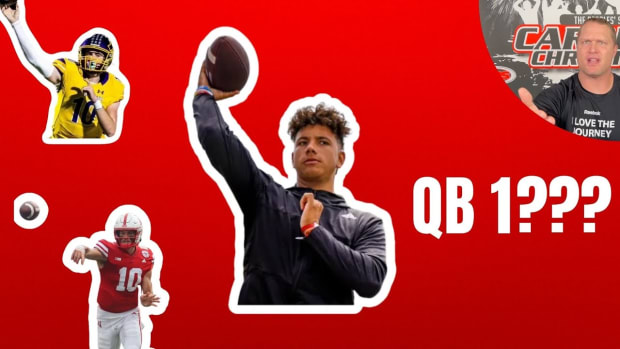
Oregon vs. Kansas State: Fiesta Bowl Breakdown
Oregon (11-1) vs. Kansas State (11-1)Jan. 3, 8:30 p.m. ET (ESPN)
BOWL PREVIEW HUB | BOWL FAQ HUB
For a week in mid-November, after Alabama lost to Texas A&M and the Wildcats and Ducks both stood at 10-0, it looked like this might be the national championship matchup. Kansas State and Oregon were ranked No. 1 and No. 2 in the BCS standings. Then upset losses to Baylor and Stanford, respectively, on the night of Nov. 17 opened the door for Notre Dame and 'Bama. For Oregon, the loss proved crushing, as it cost Chip Kelly's team a Pac-12 title in addition to a shot at the national crown. Still, the Ducks are making their fourth consecutive BCS bowl appearance. Meanwhile, K-State rebounded to beat Texas on Dec. 1 and wrap up its first Big 12 title and BCS bowl berth since 2003.
The Fiesta Bowl will feature a fascinating matchup of wits between two renowned coaches who could not be less similar: K-State's Bill Snyder and Oregon's Chip Kelly. Snyder, the white-haired 73-year-old who orchestrated one of the great program resurrections of all time (and came back to do it a second time), will likely have his team expertly prepared. Kelly, the fast-talking, fast-practicing, fast-playing 49-year-old in a visor, deviates little in his approach from game to game, but he often masterfully adjusts once things get going. His offense averages 551 yards per game and is always incredibly fun to watch. But on Thursday, that unit will play under the cloud of a looming question: Will this be the last time we watch Kelly at Oregon before he bolts to the NFL?
Points of interest
1. The layoff effect: Oregon has lost only seven games in four seasons under Kelly, but four of those came in season openers or bowl games, all against highly ranked foes. That may speak to the quality of the opposing defenses or to the time off before those games, which serves to neutralize the Ducks' up-tempo offense by disrupting its in-season rhythm and affording foes more time to prepare. Oregon has averaged more than 280 rushing yards per game under Kelly, but during the four games in question -- the 2009 season opener against Boise State (a 19-8 loss), the 2010 Rose Bowl against Ohio State (26-17), the 2011 BCS championship game against Auburn (22-19) and the 2011 season opener against LSU (40-27) -- the Ducks averaged just 95 yards on the ground. At the same time, all but Boise State finished the season ranked in the top 10 in rushing defense.
Still, the layoff prior to last year's Rose Bowl did not stop the Ducks from gashing 11-2 Wisconsin for 345 rushing yards in a 45-38 win, while Oregon tallied just 198 rushing yards (125 below its season average) in its 17-14 overtime loss to Stanford this season despite the fact that both teams played on seven days of rest. But Wisconsin struggled all of last season against the run, finishing 60th nationally, while Stanford fielded the nation's No. 3 unit in 2012.
All of which is to say, Kansas State should pose a formidable foe: It ranks 16th nationally in rushing defense, allowing 119.2 yards per game.
2. The quarterbacks: Two of the nation's most exciting quarterbacks in 2012 -- one a decorated senior, one an upstart redshirt freshmen -- will direct their offenses, but in very different ways. Oregon's Marcus Mariota is incredibly fast (he had gains of 86, 77 and 58 yards this season), but his speed comes in handy more as a decoy. The Hawaii native averaged just 8.2 rushing attempts per game this season, and some of those were sacks. He stood out largely as an incredibly efficient passer, completing 69.9 percent of his throws for 2,511 yards, 30 touchdowns and six interceptions. Mariota's 165.36 efficiency ranking was sixth-best nationally. It's not a coincidence that Oregon's rushing offense improved to a Kelly-era high of 323.3 yards per game this season.
Meanwhile Klein finished 15th in efficiency, throwing for nearly the same amount of yards (2,490) but running for an additional 890 yards and 22 touchdowns. He carried at least 12 times in every game, with three 20-plus games. Few defenses have been able to neutralize Klein as a runner, as K-Sate has no hesitation calling his number over and over. He's particularly lethal on third downs: The Wildcats have converted 50.3 percent of them, seventh-best nationally. But Klein's passing regressed over the last three games, when he threw five of his seven interceptions. Oregon coordinator Nick Aliotti loves to blitz, and it will be interesting to see how often he brings pressure on Klein.
PAULINE: NFL draft prospects to watch in Fiesta Bowl
With Oregon, the challenge is focusing on its relentless rushing attack without losing containment on Mariota. It helps that the Wildcats have a pair of cornerbacks (Nigel Malone and Allen Chapman) it can count on in man coverage.
3. The turnovers (or lack thereof): There is no discernible secret to Snyder's success, but one of the things his teams pride themselves on most is their discipline. This year was a glowing testament, as the Wildcats finished No. 1 in the country in turnover margin at plus-21. That could prove vexing for Aliotti and his defense. The Ducks aren't the most stingy unit, allowing 5.0 yards per play (No. 27) and 381.8 yards per game (No. 47), but they did tie for first in turnovers gained (38). Cornerback Ifo Ekpre-Olomu accounted for 10 on his own (six forced fumbles, four interceptions), while linebacker Kiko Alonzo added six (four picks, two forced fumbles). Kansas State wasn't far behind, forcing 31 turnovers (No. 8 nationally), with Malone, Chapman and Ty Zimmerman all picking five passes.
The Ducks' frenetic style would seemingly lead to more miscues (they coughed it up 19 times) and create opportunities for K-State to do what it does best -- flip the field. But don't be so sure. This could be a game where Mariota puts the ball in the air less frequently and Oregon rides Kenjon Barner and De'Anthony Thomas. It can look to Baylor for a blueprint. The Bears, known for their high-powered passing attack, hurt the Wildcats more though big plays on the ground, racking up 342 yards (185 of them, coincidentally, from Ducks transfer Lache Seastrunk). Meanwhile, Klein will almost certainly have to be two-dimensional to beat Oregon. The Ducks must hope they get the mistake-prone late-season passer, not the near-flawless early one.
Burning question
Can Kansas State stop the run? It's as simple as that. Oregon has been a boom-or-bust team throughout Kelly's tenure. The Ducks are most likely to either jump on the opponent and shred it, or, if frazzled early, fail to get into rhythm. Never was that more apparent than this season, when Oregon scored at least 43 points on 11 of its 12 opponents, but 14 in its sole loss.
X-factor
Kansas State's special teams: The Wildcats dominate the return game like few before them, ranking No. 1 nationally in both kickoff returns (29.2 yards per return) and punt returns (22.0). Speedster Tyler Lockett returned two kicks for touchdowns, averaging 33.3 yards per return. If Oregon does find the end zone frequently, that will mean turning around and kicking to Lockett frequently.
Statistically speaking
4:02: That's the stark difference in average time of possession between K-State (31:57), which takes its time going down the field thanks to all those three- and four-yard Klein runs, and Oregon (27:55), which completed 44 of its 80 scoring drives in less than two minutes. Kelly has made his disdain for this stat well known.
Final analysis
Kansas State's generally sound defense and discipline make it better suited than most to slowing down Oregon's offense, but the Wildcats don't face running backs the caliber of Barner or rushing attacks as powerful as the Ducks' in the pass-heavy Big 12. Like Baylor, Oregon will get weapons Mariota and Barner in space and break its share of big runs.
The pick
Oregon 40, Kansas State 27





